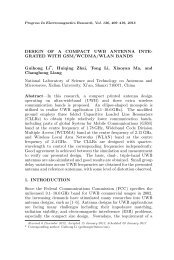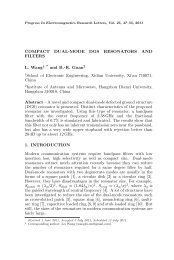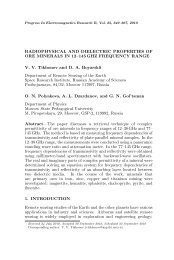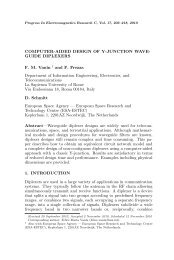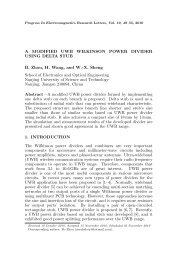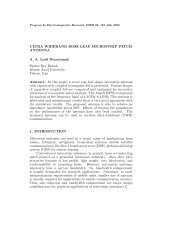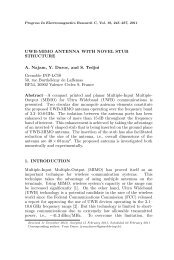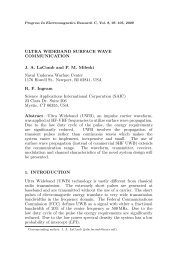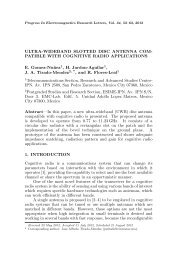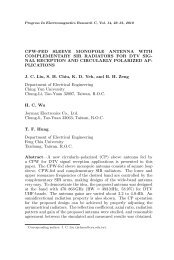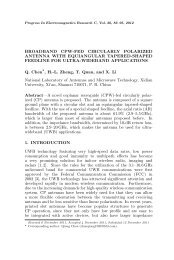PDF File (979 KB) - PIER
PDF File (979 KB) - PIER
PDF File (979 KB) - PIER
You also want an ePaper? Increase the reach of your titles
YUMPU automatically turns print PDFs into web optimized ePapers that Google loves.
128 Angermann and Yatsyk<br />
z ∈ [−2πδ, 2πδ]), see Figures 9(b), (d), (f). For given amplitudes<br />
a inc<br />
κ and a inc<br />
2κ , the graph of Im(ε nκ[a inc<br />
κ , a inc<br />
2κ , z]) characterises the loss of<br />
energy in the nonlinear layer at the excitation frequencies nκ, n = 1, 2,<br />
caused by the generation of the electromagnetic field of the third<br />
harmonic. Such a situation arises because of the right-hand side of (7)<br />
at the triple frequency and the generation which is evoked by the righthand<br />
side of (7) at the basic frequency. From Figures 9(b), (d), (f)<br />
we see that small values of a inc<br />
κ and a inc<br />
2κ induce a small amplitude<br />
of the function Im(ε nκ ), i.e., |Im(ε nκ )| ≈ 0. The increase of a inc<br />
κ<br />
(a)<br />
(b)<br />
(c)<br />
(d)<br />
(e)<br />
Figure 9. Graphs characterising the nonlinear dielectric permittivity<br />
in dependence on [a inc<br />
κ , a inc<br />
2κ , z] for ϕ κ = 60 ◦ and a inc<br />
2κ = 1 3 ainc κ :<br />
(a) Re(ε κ ), (b) Im(ε κ ), (c) Re(ε 2κ ), (d) Im(ε 2κ ), (e) Re(ε 3κ ),<br />
(f) Im(ε 3κ ).<br />
(f)




